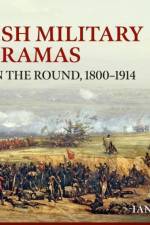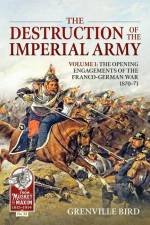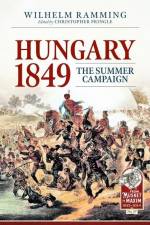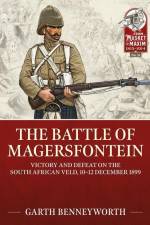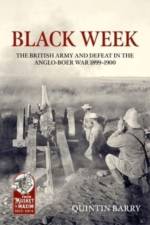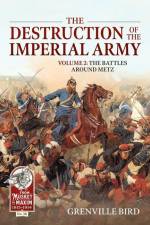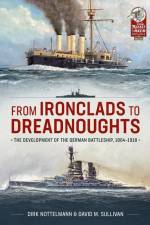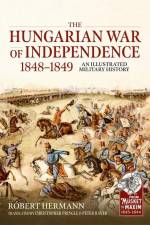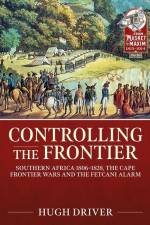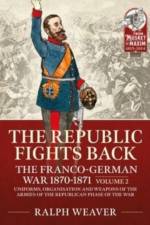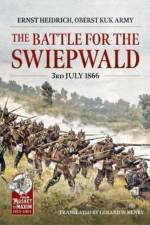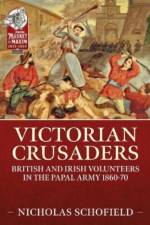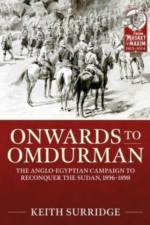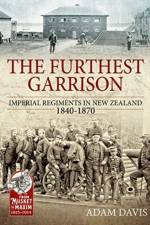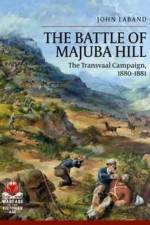- Garnet Wolseley's Canadian Red River Expedition of 1870
av Paul McNicholls
367
In the spring of 1870 an Anglo-Canadian military force embarked on a 1,200 mile journey, half of which would be through the wilderness, bound for the Red River Settlement, the sight of present day Winnipeg. At the time the settlement was part of the vast Hudson's Bay Company controlled territories which Canada was in the process of purchasing.Today Canada is the second largest country in the world, but at the time it was a recent creation made up of three British North American colonies. The British government of the day, focussed on financial retrenchment and anchored on anti-imperialist values, would have happily severed its ties with its North American colonies. The dynamic American republic, resurgent after the cataclysm of the Civil War, aspired to take control of all of the British North American territories, including Canada and the Hudson's Bay Company lands. Canadian Prime Minister John A. Macdonald knew that for his new country to survive and prosper it would have to expand across the continent and incorporate the Hudson's Bay Company's lands, and ultimately the colony of British Columbia on the Pacific Ocean as well. The HBC was in decline and wanted to give up the responsibility for its vast territories. Macdonald would have preferred Britain to take on this responsibility until Canada was ready, but Westminster was unwilling. Ready or not, Canada would have to act or risk the United States getting in ahead of them.In all of this, the interests of the indigenous people received scant consideration, and this included the residents of the Red River Settlement. The population here, about 14,000 strong, was mostly comprised of the descendants of the Kildonan Scots, farmers who had arrived under the auspices Lord Selkirk earlier in the century, the mixed race descendants of English speaking HBC workers and First Nations women, and the mixed race descendants of French speaking North West Company workers and First Nations women. The latter group, known as the M¿s, had long before the time of Canada's pending takeover developed a distinct cultural identity, referring to themselves as "A New Nation".In 1869 the M¿s were nervous of the pending Canadian takeover. They feared their property rights, the most tenuous in the community, would not be respected. They also worried that their culture would be overwhelmed by an influx of English speaking settlers. Their concerns were reinforced when Canadian surveyors and road builders arrived in the community. The Canadians behaved exactly as the M¿s had feared prompting the beginning of an opposition with demands for guarantees.The man who rose to lead the M¿s opposition was Louis Riel, and while his demands were just, during the winter of 1869/70, supported by the organized military power of the buffalo hunt, he rode roughshod over the views of the other communities in residence at Red River. These included not only the Kildonan Scots and English-speaking mixed race people, but also M¿s opponents and the much smaller and troublesome Canadian Party. Prime Minister Macdonald had been lax in acting to accommodate the interests of the Red River residents, but there was in fact little interest in Canada for the events unfolding there. Matters were transformed when Riel approved the execution of a member of the Canadian Party in March of 1870. Much of English speaking Canada found its voice and demanded a vigorous response.Macdonald, under considerable pressure, wanted a military expedition dispatched and he was adamant that the British should lead it. Even after a deal was completed, resulting in the creation of the new province of Manitoba, he remained firm in his belief that a force should be sent to assume control. Despite having already announced the withdrawal of its Canadian garrison, the British government reluctantly agreed to commit imperial troops to the venture. The completion of the deal between Canada and the Red River settlement was in fact a precondition of British involvement in the affair. It was also critical that the British troops get to the settlement and back again before the winter set in.Colonel Garnet Wolseley was chosen to lead the expedition, and as such, though in many respects an obscure and minor operation, it is an important subject of study given that it was his first independent command and he would rise to become Commander in Chief of the British Army. It demonstrated an attention to detail that would be fundamental to his rise up through the army hierarchy and utilized a transportation technique that he would attempt to replicate in his more famous Gordon Relief Expedition of 1884/1885. It also introduced a number of the personalities who would later become firmly entrenched as members of the Wolseley Ring.There was no good route from Canada to the Red River Settlement. The expedition, comprised of British regulars and Canadian militia, travelled first by steamer to Thunder Bay on Lake Superior and then by an incomplete road to Shebandowan Lake. The state of the road would become one of the major talking points of the whole affair. From Shebandowan Lake they went by row boat utilizing the old North West Company's canoe highway, carrying all the supplies they would need for the journey. They suffered the challenges of having to cross 47 portages, run multiple river rapids, and weather significant storms on some of the larger lakes of the interior. It rained, frequently torrentially, for roughly half of the days between their arrival at Thunder Bay and their reaching of Fort Garry at the Red River Settlement. On the days it didn't rain, they were feasted upon by the billions of insects resident in the woods of the Canadian Shield.Many historians have written on the events of the troubles at Red River in 1869/70, but the expedition itself is usually treated as a footnote and given a few lines or at most a paragraph. The author has found only one relatively recent account (published in the 1980s) that dealt with the expedition in detail and he has frequently, though respectfully, disagreed with many of the assertions and conclusions found therein. Consequently, it has been found necessary to go to the expeditionary force documents and first hand accounts of the men who took part, to properly understand exactly what the Red River Expedition was about and what the men who made up the force actually went through. By doing this author believes he has come up with a lively and original recounting of this little known story in British Imperial and Canadian history.

